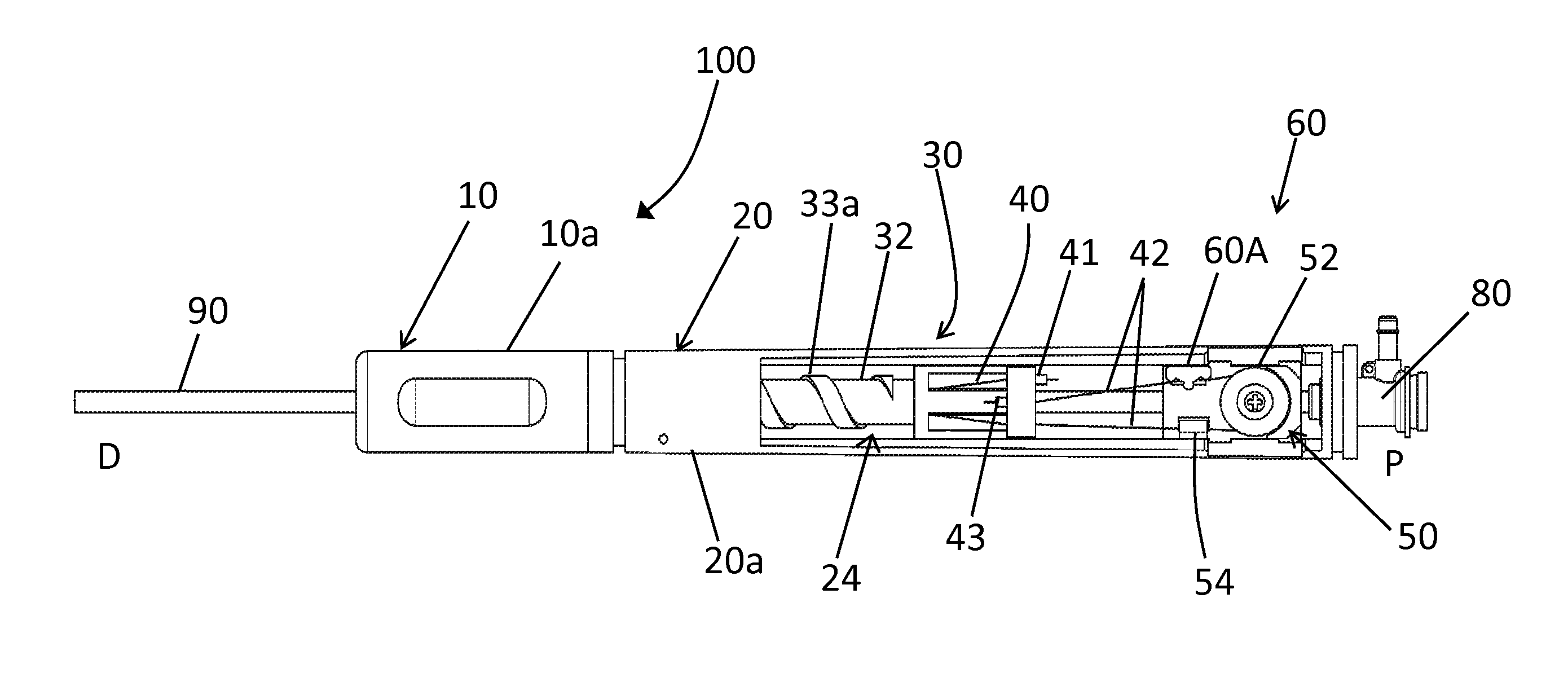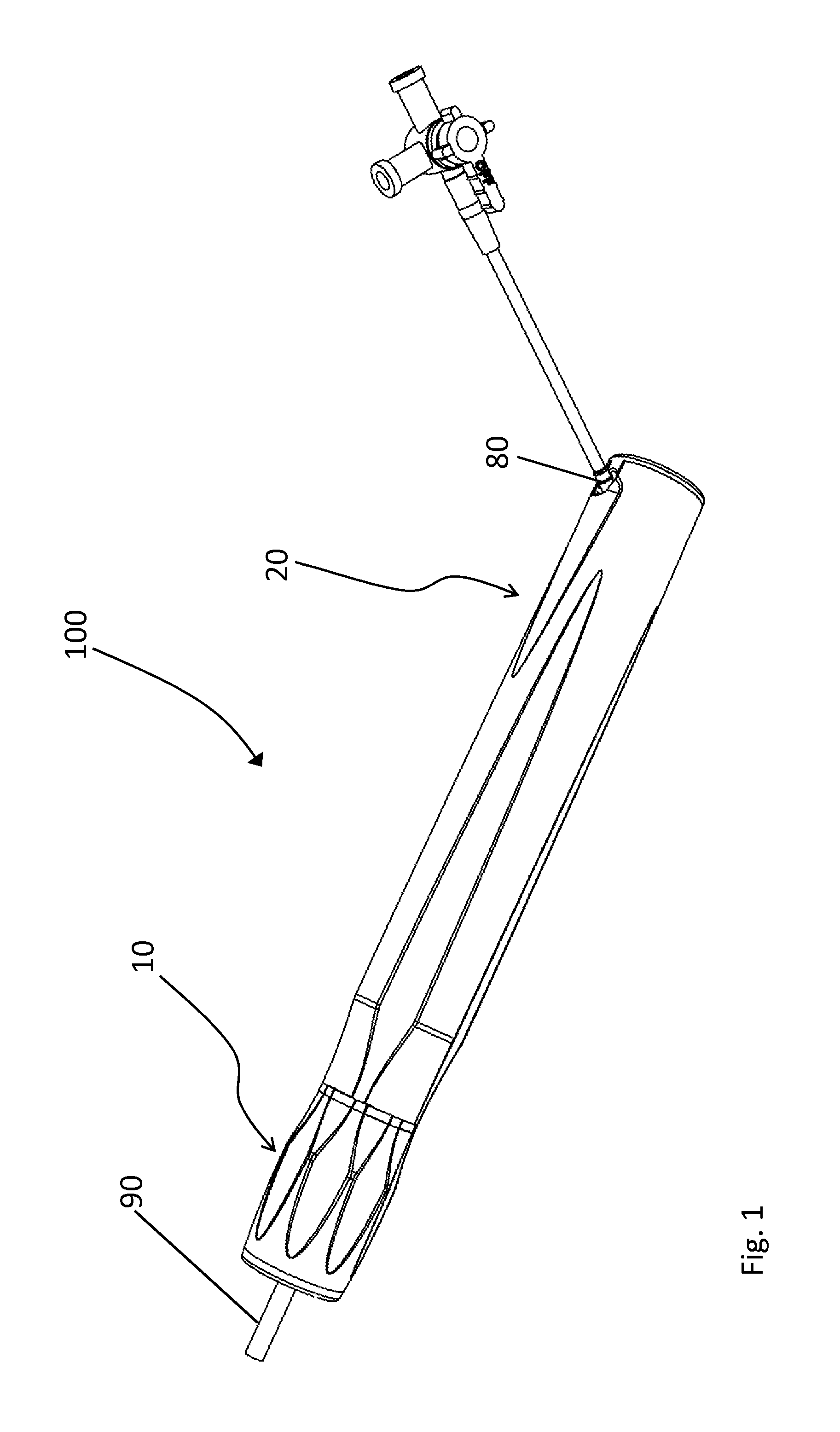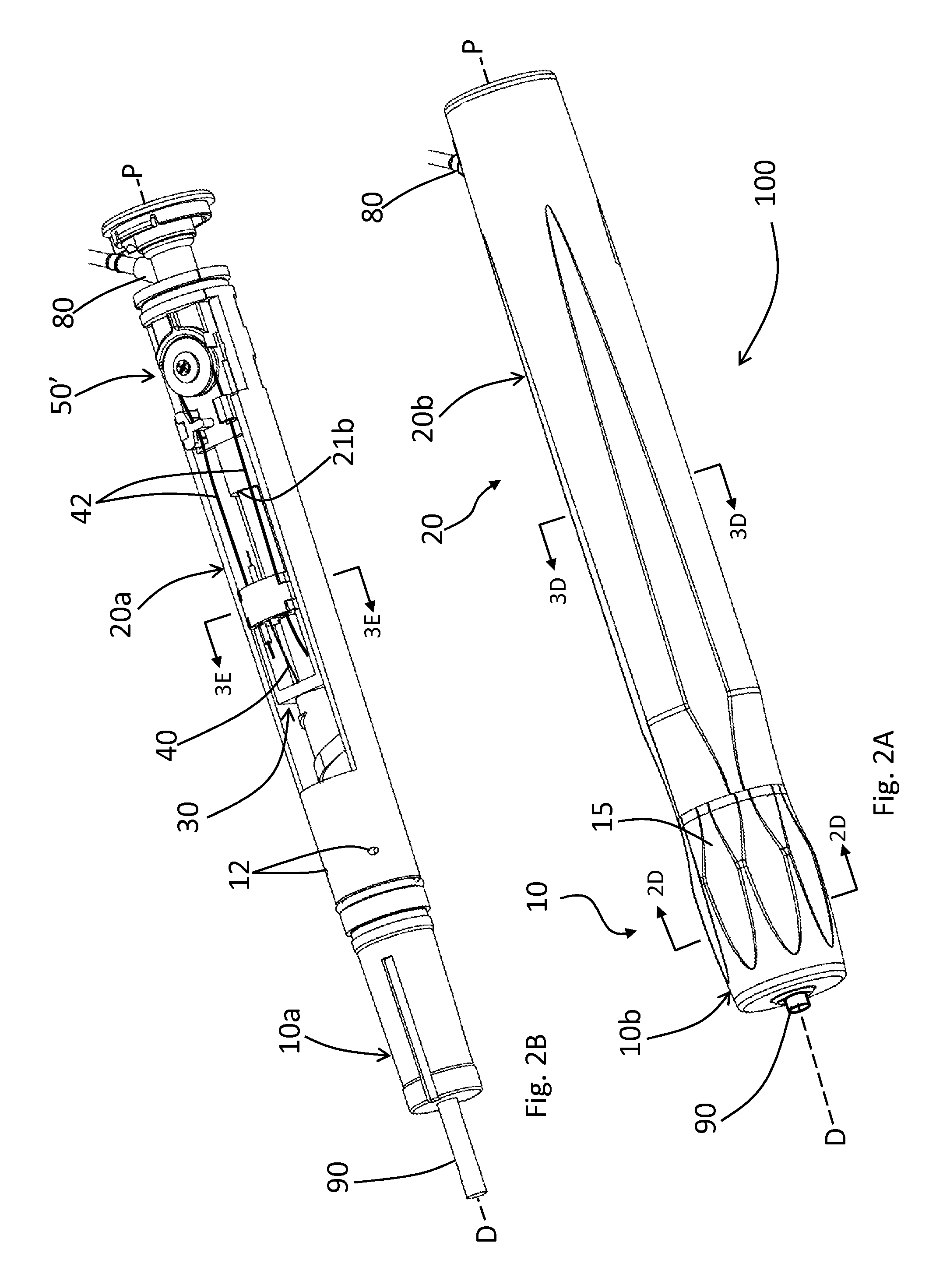Steerable Medical Device Handle
- Summary
- Abstract
- Description
- Claims
- Application Information
AI Technical Summary
Benefits of technology
Problems solved by technology
Method used
Image
Examples
example 1
Slide Limiting Element is the Track
[0103]As outlined above, the track 21a within the inner housing 20a can additionally function as a slide stop to restrict the movement of the slide assembly 30 to allow for a desired deflection of the sheath 90. As shown in FIG. 10a, once the slide assembly 30 (for example a raised projection 31a of the slide assembly 30 shown in FIG. 3E) reaches the end of the track it abuts against a wall 21a′ at the end of the groove or track 21a, thereby stopping or limiting linear motion of the slide assembly.
[0104]In some embodiments, the length of the track 21a may be adjustable to alter the degree of deflection that may be provided in the sheath 90 using the handle 100. Thus in some embodiments a shorter track 21a may be provided in the inner housing 20a as shown in FIG. 10a, providing a shorter translation distance for the slide assembly 30 resulting in a more limited range of motion for the sheath 90. In other words the sheath 90 is provided with a reduce...
example 2
Slide Limiting Element is a Tubular Slide Stop
[0106]In some embodiments as described previously, the slide limiting element comprises a tubular slide stop 21b as shown in FIGS. 2A-2C, 4B-4C, 5A and 10D. The use of a longer tubular slide stop 21b results in a more restricted movement of the slide assembly 30. In one example, the tubular slide stop 21b is positioned proximal to the slide assembly 30. In some embodiments the tubular stop 21b comprises a relatively hard material and is substantially rigid such that it does not yield substantially under application of force. In one such example, upon clockwise rotation of the knob 10, as slide assembly 30 translates proximally within the inner housing 20a the slide assembly 30 abuts against the wall 21b′ of a rigid tubular slide stop 21b preventing further translation of the slide assembly 30. This provides tactile feedback which may be experienced as a hard stop by the user. This may help indicate to the user that the maximum deflection...
example 3
Slide Limiting Element Comprises a Bar
[0108]As described previously, in some embodiments the slide limiting element or slide stop comprises a bar 21c extends with the inner housing 20a along a transverse plane. In one example, the bar 21c is positioned between the slide assembly 30 and the pulley assembly 50. The bar 21c impedes or restricts the movement of the slide assembly 30 as it abuts against wall 21c′ of the bar, thus restricting the total translation distance available to the slide assembly 30. This consequently restricts the amount of tension that can be placed on one or more of the wires 40, 42 and thus limiting the deflection of the sheath 90.
PUM
 Login to View More
Login to View More Abstract
Description
Claims
Application Information
 Login to View More
Login to View More - R&D
- Intellectual Property
- Life Sciences
- Materials
- Tech Scout
- Unparalleled Data Quality
- Higher Quality Content
- 60% Fewer Hallucinations
Browse by: Latest US Patents, China's latest patents, Technical Efficacy Thesaurus, Application Domain, Technology Topic, Popular Technical Reports.
© 2025 PatSnap. All rights reserved.Legal|Privacy policy|Modern Slavery Act Transparency Statement|Sitemap|About US| Contact US: help@patsnap.com



